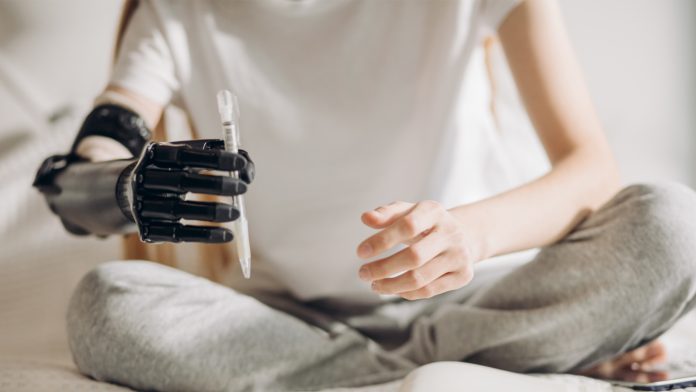Amy Leary, marketing manager at eBOM, discusses the role of biomedical engineering, particularly during the COVID-19 pandemic.
Biomedical engineering is a huge topic nowadays – especially with COVID-19 circulating the globe. Biomedical engineering (often known as ‘medical engineering’) is the term used for the combination of biology and engineering or applying engineering materials to medicine and healthcare. Biomedical engineering is very important for the healthcare industry – from advancing medical treatments to monitoring a condition – without it the healthcare industry would be very unreliable.
History
Biomedical engineering was first introduced by Alfred E Mann, a physicist, entrepreneur, and philanthropist. Since then, the 1970s, the sector has developed in leaps and bounds, and the first dedicated institution was built in 1998 at the University of Southern California, USA.
Especially during the last few years, biomedical engineering has been extremely important for improving healthcare and medical devices. Most biomedical engineers are employed for scientific research, pharmaceutical companies, and manufacturing firms. It was in 1993 when five biomedical engineers in Edinburgh, UK created the first functional bionic arm – also known as the ‘Edinburgh Modular Arm System’. This specific arm consisted of miniature motors, microchips, and grips which allowed the artificial fingers to grip objects, along with a twistable wrist
Now, bionic arms are so much more advanced and expensive. In today’s era, prosthetic arms are made from strong, durable lightweight materials such as carbon fibre and have a very different structure. “Nowadays, implants are placed in the sensory system to control nerve action, rather than devices attached to the body by straps or artificially powered,” said Jacky Finch, a researcher in the KNH Centre for Biomedical Egyptology at the University of Manchester, UK.
As technology has developed, so has biomedical engineering. In the last decade, advanced electronics have assisted us in accessing many of the necessary scientific details.
COVID-19
COVID-19 is a virus which is caused by severe acute respiratory syndrome and is shown to display symptoms between six and 41 days, with the most common being 14 days. The virus first broke out in Wuhan, China in December 2019 and spread across the globe within weeks. So much so that the WHO declared to be a Public Health Emergency of International Concern on 30 January, 2020.
There has been worldwide concern that there is a shortage of available ventilators which are required to support patients with this lift threatening illness. For many patients critically ill with COVID-19, a ventilator could be a matter of life or death. The machine works to get oxygen to the lungs whilst removing carbon dioxide, which is essential for patients who are too sick to breathe on their own.
Biomedical engineering plays a huge part in manufacturing these breathing devices and ensuring they are compatible. Furthermore, ventilators are very difficult to manufacturer due to their unique structure and programming.
“These are extremely sensitive machines with not only a lot of hardware, but also a lot of software. If one of the components does not work correctly, the whole machine shuts down and cannot be used anymore,” explained Jens Hallek, CEO at Hamilton Medical.
However, both large and small companies are joining forces in order to tackle the virus once and for all. According to the Daily Mail, a UK newspaper, a family run engineering company located in Wales are developing a new ventilator to treat patients. It is said they are en route to producing 100 ventilators a day. This engineering company, CR Clarke – which usually designs plastic fabrication equipment for industry – was approached by Dr Rhys Thomas (NHS Senior) who was concerned at the lack of intensive care unit ventilators.
Weaknesses of biomedical engineering
The biomedical engineering profession and industry continues to receive a lot of praise for the advances it makes and the problems it solves. However, there is also some controversy when it comes to changing the fate of someone’s life by an unnatural source – such as ventilators, bionic prosthetics etc. Indeed, some people have questioned the morality of biomedical engineering because it is not ‘what was intended’, and others have even come to view biomedical engineering as a form of mutilation of the existing species.
In addition, in some rare cases, biomedical engineering could potentially, and albeit unintentionally, harm humans. For instance, there is evidence to suggest that biomedical engineering may cause the development of drug resistant pathogens.
Strengths of biomedical engineering
But, if course, there are numerous benefits to biomedical engineering, too. In times like this, with COVID-19 spreading across the globe, we are fortunate that biomedical engineering is so advanced and successful. Bioengineering has played a vital role in ensuring that common diseases are defeated. Through genetic modification, some diseases have been beaten while others have been neutralised. And it is thanks to biomedical engineering that people are living longer – as a result of the technology and modifications it brings about. Indeed, scientists have been able to extend the life of some organisms by a few years.
Market insights
As you can image, due to coronavirus the demand for the most advanced biomedical engineering has rocketed. Many organisations such as car manufactures have joined forces in rapidly producing ventilators. Elsewhere, a ventilator specialist is drawing on manufacturing support from firms including Formula 1 teams McLaren, Mercedes, Ford, Siemens, and Meggitt.
Tesla are also contributing to tackle the virus. As stated in Forbes, the coronavirus crisis has led Elon Musk to jump into the medical device industry, with SpaceX fabricating components for Medtronic MDT ventilators, corporate donations of BiPAP breathing machines that can be modified for use as non-invasive ventilators, and promising to use a Tesla TSLA factory to produce ventilators. Now, Tesla engineers have designed a prototype ventilator that uses parts adapted from electric vehicles.
Biomedical engineers are in high demand in order to keep on top of the safety trends which this virus is causing globally. As a result, there is a very strong sense that this industry will continue to go from strength to strength.
Amy Leary
Marketing Manager
eBOM.com
+44 (0) 1892 613400
amy.leary@ebom.com
Tweet @elecbom
www.ebom.com
Please note, this article will also appear in the second edition of our new quarterly publication.









